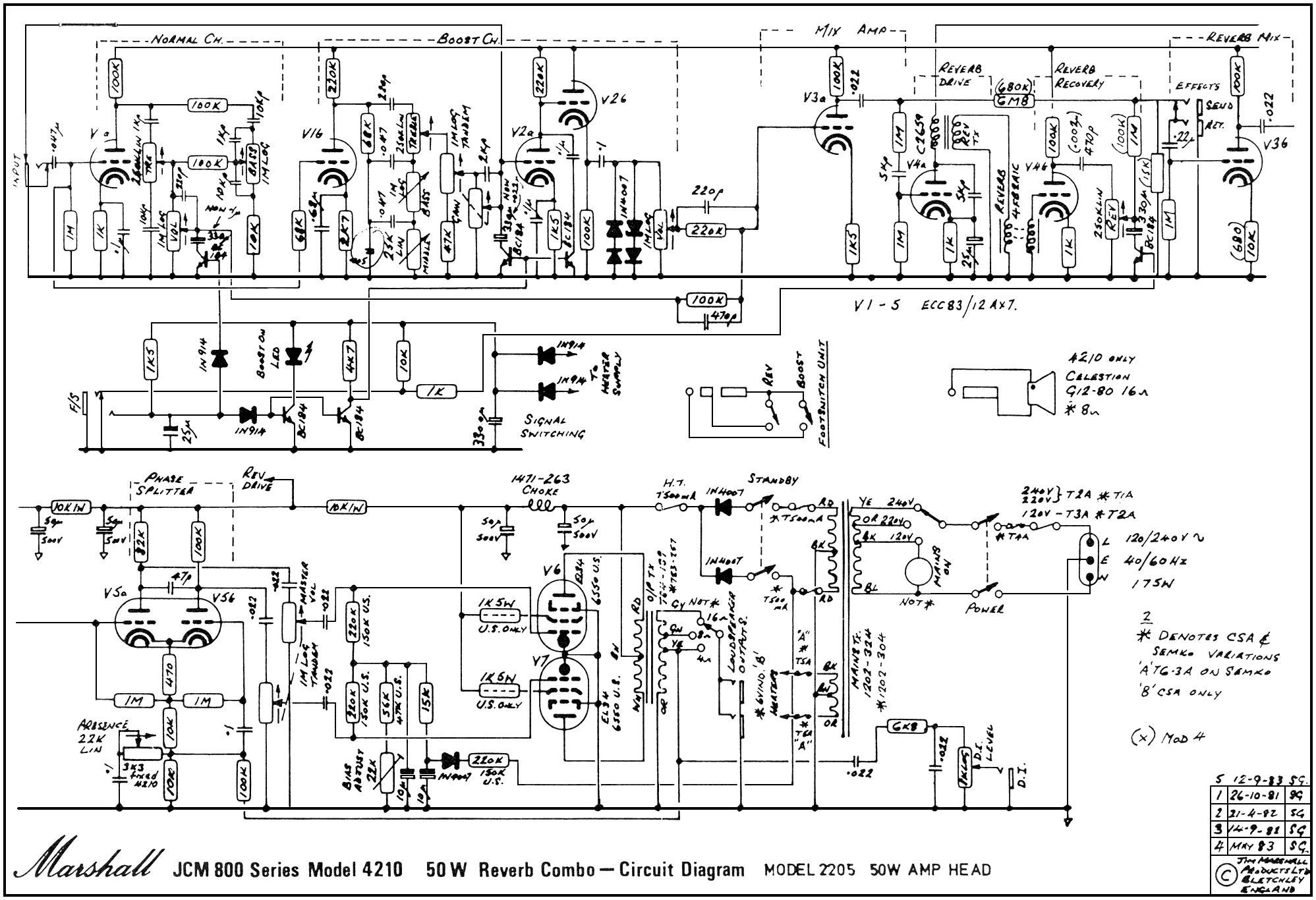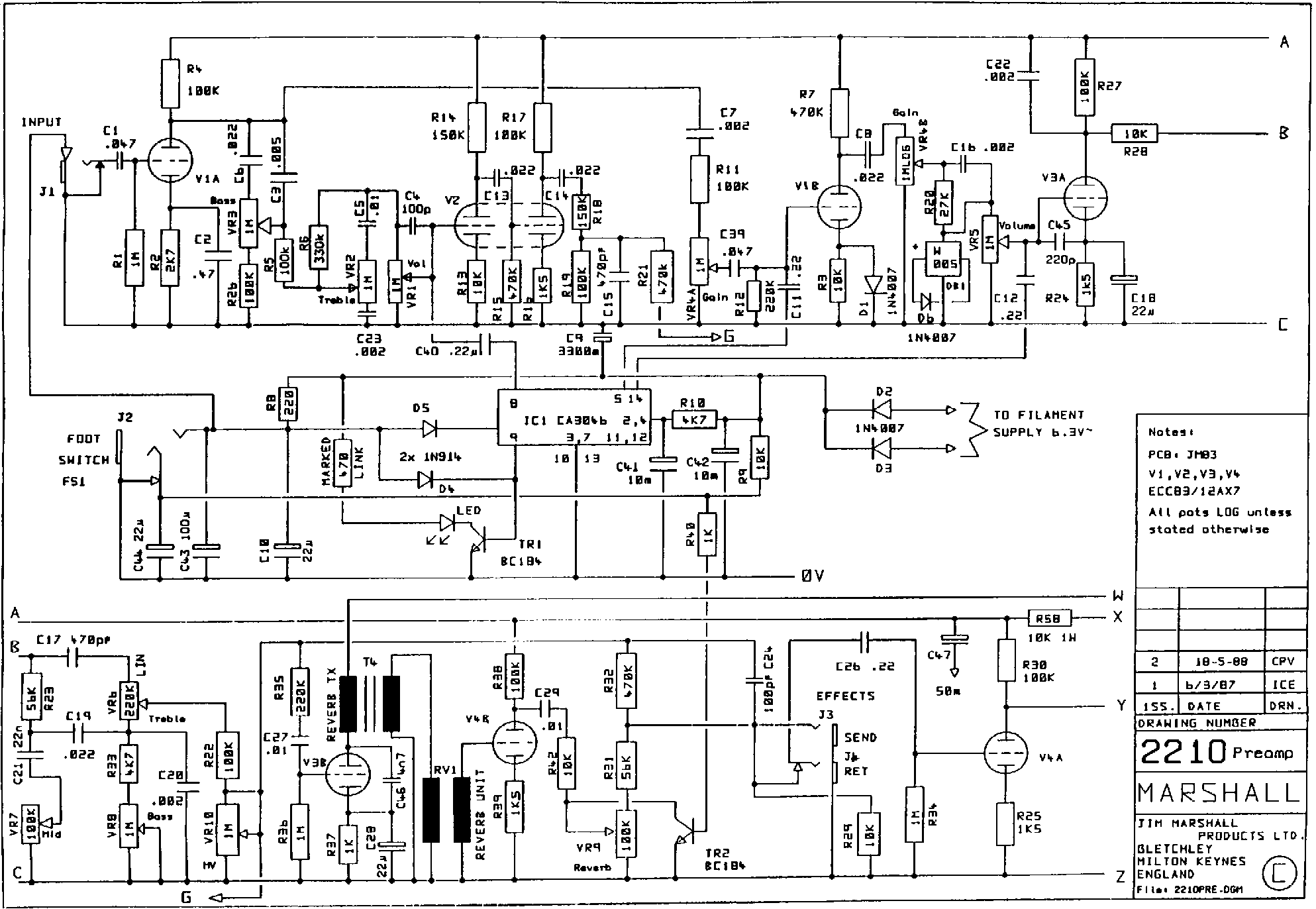I have been wanting to do a video on my favorite Marshall amps - the split channel 800 series - for some time. My 2205 made a short appearance as a comparison to the 2555X in my first video, but I never went into the details.
One of the main reasons I haven’t done a video on those amps yet is because both of the ones I own - an ‘85 2205 and a an ‘86 2210 - are the “later” circuit design. This may seem like a minor thing, but the earlier circuit, such as the one used on this 1982 model 2210, is much larger than many realize. I finally got my hands on an early model amp in good condition, with a complete recap job to boot, so it’s in tip-top shape.
Despite sharing the exact same controls, markings, and model number, these may as well be two different amps! This isn’t like comparing two different revisions of Mesa Rectifiers - a value change here and there - these split channel 800’s have completely different signal paths.
Both amps share the same tube complement, as well as a long spring reverb tank, tube buffered effects loop, and Marshall’s first ever channel switching capability via a two button footswitch (one button for channel, the other for reverb on/off). There is a master volume, presence, and reverb control that affects both channels, and the “normal” channel can be kept relatively clean (still a “Marshall” clean) with a two-band EQ, and the “boost” channel has both a gain and a channel volume control, as well as a more standard 3-band EQ, for more drive.
The ‘82 amp’s clipping diode array is visible towards the top right, located between the VR5 and VR6 pots.
However, there are some pretty important differences in the details. This early amp has a post phase inverter master volume, a very odd design that uses a dual-gang pot, one on each half of the phase inverter signal. Later 2210’s had a standard pot, pre-PI master. There are also differences in the guitar signal path itself, with early amps sporting a quad of 1N4007 diodes arranged to clip the signal and add overdrive, situated just after a cathode follower on V2B and before the boost channel volume control - the later design retains some diode clipping, but uses two diodes located in different areas of the circuit, and the cathode follower is gone completely. The last major divergence is the earlier design placing the 3-band EQ just before the gain control, right after the input gain stage - not too different from something like a Mesa Mark series amp. The later design moves the EQ to the more standard Marshall location, after 3 tube gain stages, although lacking the cathode follower/tone stack driver that amps like the 2203 or 1959 use.
The ‘82 amp’s six filter capacitors visible
Also as somewhat expected for 1982, this amp carries a large array of 6 filter caps, just like an early 2203 would have. My later 2210 has only 3 filter caps, which follows the same sort of trend, as a 1986 year 2203 would also only have 3 filter caps. It’s hard to say what effect this has on the sound exactly though, since the other circuit differences make it hard to compare, unlike the 2203 which is still the same basic circuit in 1986 as it was in 1982 (besides HT voltages).
Now that I have this amp, I look forward to working on a video explaining these differences and importantly, doing an A/B comparison between both circuit revisions.
You can review photos of the internals of both amps here:
Early and Later schematics:




